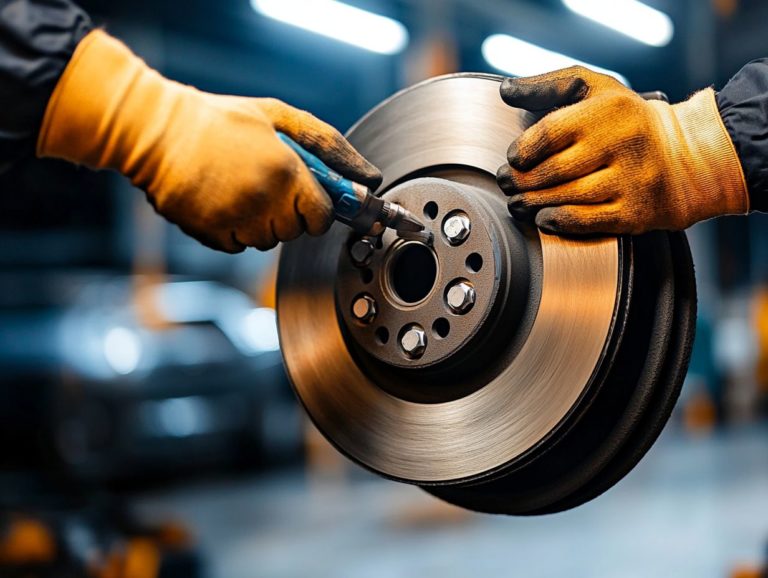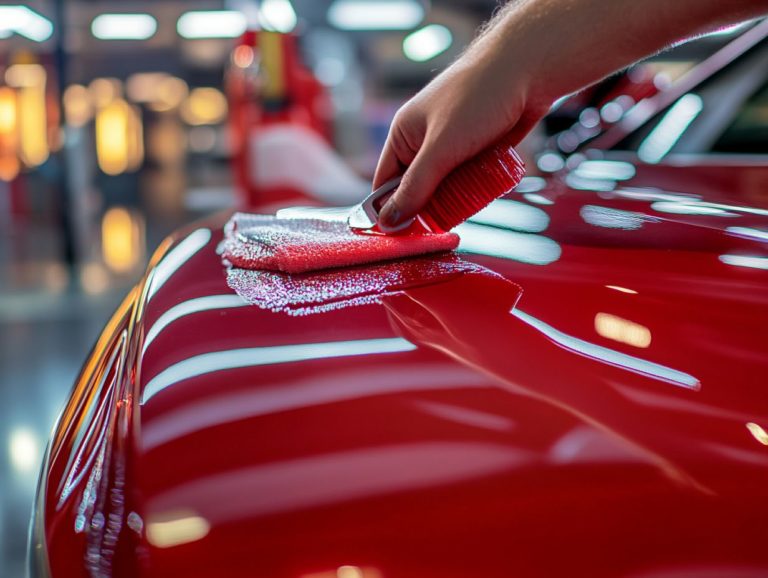How to Identify and Prevent Rust on Your Car
Rust can be a car owner’s worst nightmare, creeping in quietly and wreaking havoc if not addressed promptly.
Knowing about rust is key for every vehicle owner. Understanding what rust is, how it forms, and the signs to watch for is crucial for maintaining the health of your vehicle. This guide will illuminate common problem areas where rust tends to develop, offering practical tips for prevention and effective methods for tackling any existing rust.
Don’t wait until it’s too late act now to prevent rust! By staying informed, you can safeguard your investment and ensure your car remains in pristine condition for years to come.
Contents
Key Takeaways:
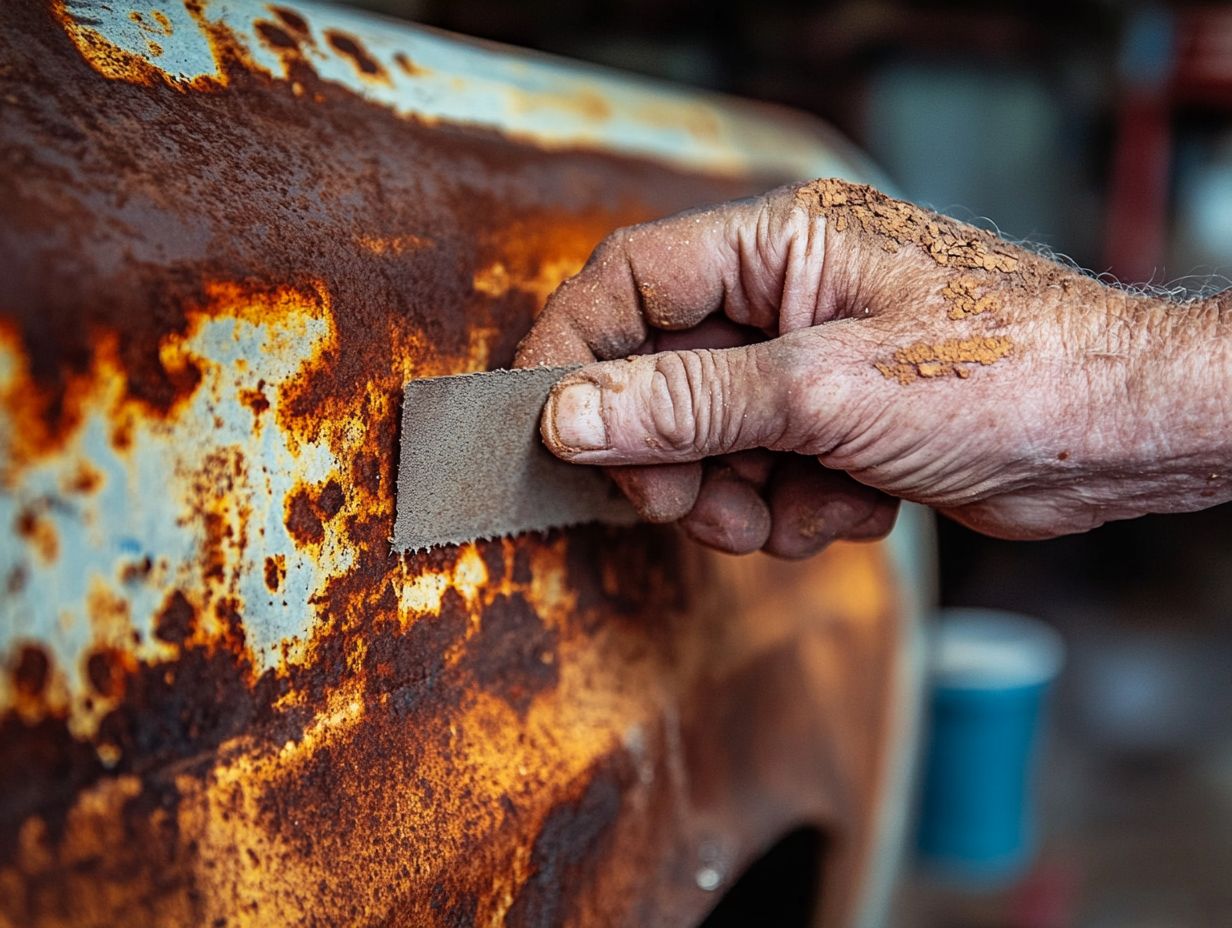
- Regular maintenance and cleaning is crucial in preventing rust on your car. This includes regularly washing, waxing, and inspecting your car for any signs of rust.
- Protective coatings and treatments can also help prevent rust on your car. Consider applying a rust inhibitor, undercoating, or rust-resistant paint to vulnerable areas.
- If you notice signs of rust on your car, it’s important to address it promptly. Removing and repairing rust can help prevent further damage and prolong the life of your car.
Understanding Rust on Cars
Rust is a form of corrosion that primarily develops when exposed metal interacts with moisture and oxygen. Corrosion is when metal deteriorates over time due to reactions with moisture and air. Rust gives rise to various types that can significantly shorten your vehicle’s lifespan.
The corrosion process often begins imperceptibly but can escalate rapidly. It’s crucial for you to recognize the signs early on. By implementing preventive measures, you can keep your vehicle in pristine condition and rust-free for years to come.
What is Rust and How Does it Form?
Rust is a type of corrosion that emerges when iron or its alloys encounter moisture and oxygen, resulting in iron oxide a compound that gradually weakens the metal. This chemical reaction unfolds as iron interacts with water and oxygen in the environment. It triggers an electrochemical process that hastens deterioration.
If you find yourself in an environment with salt or acidic conditions, be aware that these factors can greatly accelerate rusting, leading to various manifestations. For instance, surface rust typically presents itself as a reddish-brown powdery coating, which can often be managed with regular maintenance.
On the other hand, bubble rust, marked by blisters on the surface, signals deeper damage and usually requires more extensive repairs. Recognizing these types of rust is essential for vehicle maintenance. Addressing them promptly can save you from costly repairs and ensure longevity.
Signs of Rust on Your Car
Recognizing the early signs of rust on your car can be transformative for you as a vehicle owner. It gives you the power to tackle potential issues before they develop into serious rust damage.
Taking proactive steps now can save you time and money down the road, ensuring your car remains in optimal condition.
Visual Indicators
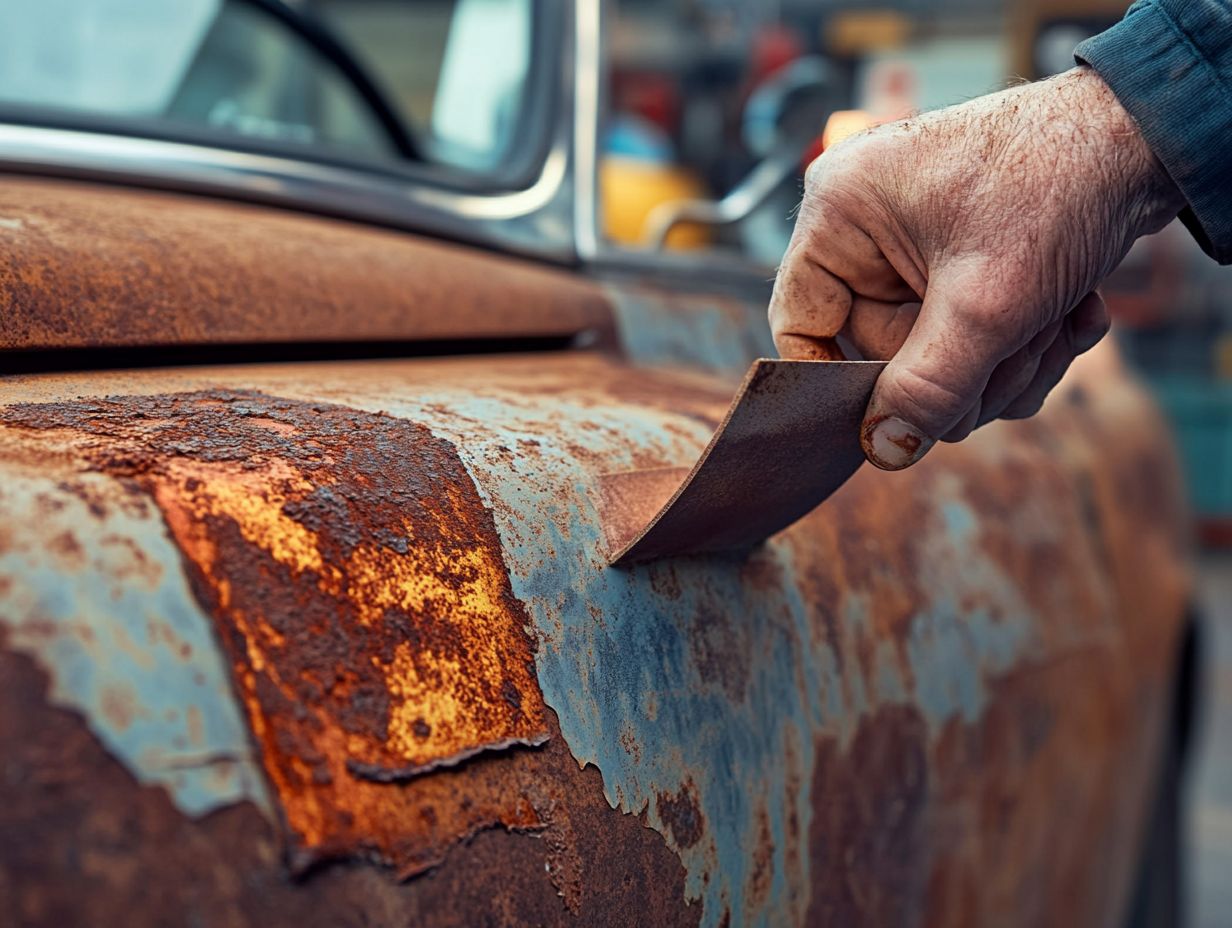
Visual indicators of rust are quite telling; you should keep an eye out for discoloration, flaking paint, and that telltale surface rust, which often manifests as a reddish-brown, powdery residue on exposed metal.
Another critical sign to be aware of is bubble rust. This appears as raised blisters beneath the paint, formed by moisture that is trapped below the surface, which compromises the protective coating.
During your routine car inspection, it’s prudent to check around the wheel wells, the undercarriage, and any seams or joints where rust is likely to take hold. Keep an eye out for any changes in texture or color, and don t forget to inspect areas where water might pool, as these are prime candidates for rust formation.
Common Problem Areas
Common problem areas for rust on your vehicle often include the underbody, wheel wells, and regions around the exhaust system where moisture tends to gather, leading to potential corrosion issues.
These areas are particularly susceptible because they are constantly exposed to the elements, including road salt, water, and ice during harsh winter months. Salt is spread on icy roads to enhance traction, but it clings to your vehicle, especially beneath and within the wheel wells.
Regular inspections in these critical spots can significantly extend your vehicle’s lifespan. Periodically check for signs of rust or debris buildup, as trapped moisture can cause serious problems. A flashlight helps you uncover hidden rust spots.
Applying a protective undercoating creates a strong barrier against rust, ensuring your vehicle stays in excellent condition for years to come.
Preventing Rust on Your Car
Preventing car rust is crucial for preserving both the aesthetics and longevity of your vehicle. This entails a blend of routine maintenance practices alongside targeted rust prevention methods tailored to your specific environment.
Regular Maintenance and Cleaning
Regular maintenance and cleaning are vital steps to prevent car rust, which can lead to costly repairs and compromise the integrity of your vehicle over time.
Washing your car frequently is essential, as it removes harmful salt deposits and grime that accelerate corrosion. This is especially crucial during the winter months when roads are treated with salt to combat ice. Neglecting to clean the undercarriage can cause significant long-term damage.
Utilizing pressure washing is an effective method to ensure that these hazardous substances are thoroughly eliminated from hard-to-reach areas of your vehicle. Keeping the underbody clean enhances the car’s appearance and significantly reduces the risk of underbody rust. This proactive approach extends the lifespan of crucial components and ensures a safer driving experience.
Protective Coatings and Treatments
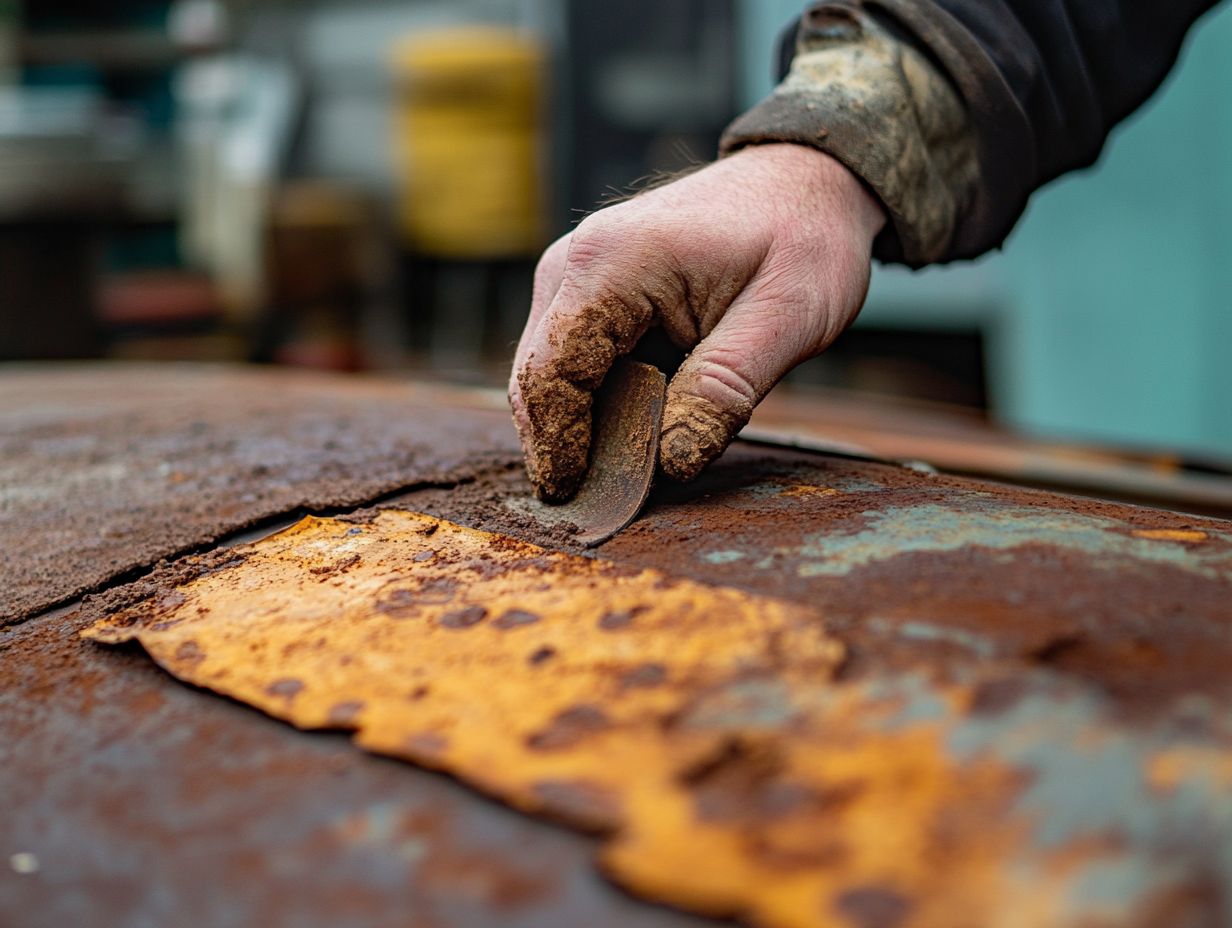
Applying protective coatings and treatments, such as sprays that prevent rust and WD-40 coatings, can significantly enhance your vehicle’s rust resistance, effectively safeguarding it against corrosion.
Choosing solutions like ceramic coatings, wax, or polymer sealants allows you to create a powerful shield against environmental elements that contribute to degradation. Each coating type has its strengths; for instance, ceramic coatings deliver long-lasting protection against UV rays and chemical damage, while wax offers a more traditional shield, although it’s shorter-lived.
Application methods vary some require professional expertise, while others, like sprays, allow for convenient at-home application. To ensure maximum effectiveness, maintain these coatings with regular reapplications, especially for rust prevention sprays that create a protective film wearing thin over time.
Dealing with Existing Rust
Dealing with existing rust can be quite the challenge for vehicle owners. However, understanding effective removal and repair techniques is crucial for restoring your car’s aesthetics and preventing further damage.
Removal and Repair Methods
Rust removal and repair methods vary, from simple touch-up paint applications for minor surface rust to more extensive techniques for deeper corrosion damage.
You might consider using rust prevention sprays that create a protective barrier against moisture, effectively inhibiting further oxidation. These sprays are not only easy to apply but can also significantly extend the lifespan of your metal surfaces.
Tackle DIY repairs with basic tools like wire brushes and sandpaper to prep rusted areas before applying any protective coatings. Clean the affected spots thoroughly to ensure that all loose rust is removed.
Follow up with touch-up paint to restore the aesthetics and add an extra layer of defense against future rust formation, making this a practical choice for effective rust management.
When to Seek Professional Help
Recognizing when to enlist professional help for rust damage is essential to preserving your vehicle’s integrity. This is especially true when corrosion has advanced beyond simple repair methods.
If you notice rust that has penetrated deeply enough to compromise critical components like the frame, suspension, or brakes, it s a clear indication that you need professional intervention. If the rust appears to be spreading visibly or has infiltrated hard-to-reach areas, like beneath the paint or within internal cavities, don t wait get expert help now!
Choose a skilled professional for rust repair. Look for someone with solid recommendations and experience. This ensures they utilize quality materials and techniques aimed at restoring your vehicle s original strength and safety.
Frequently Asked Questions
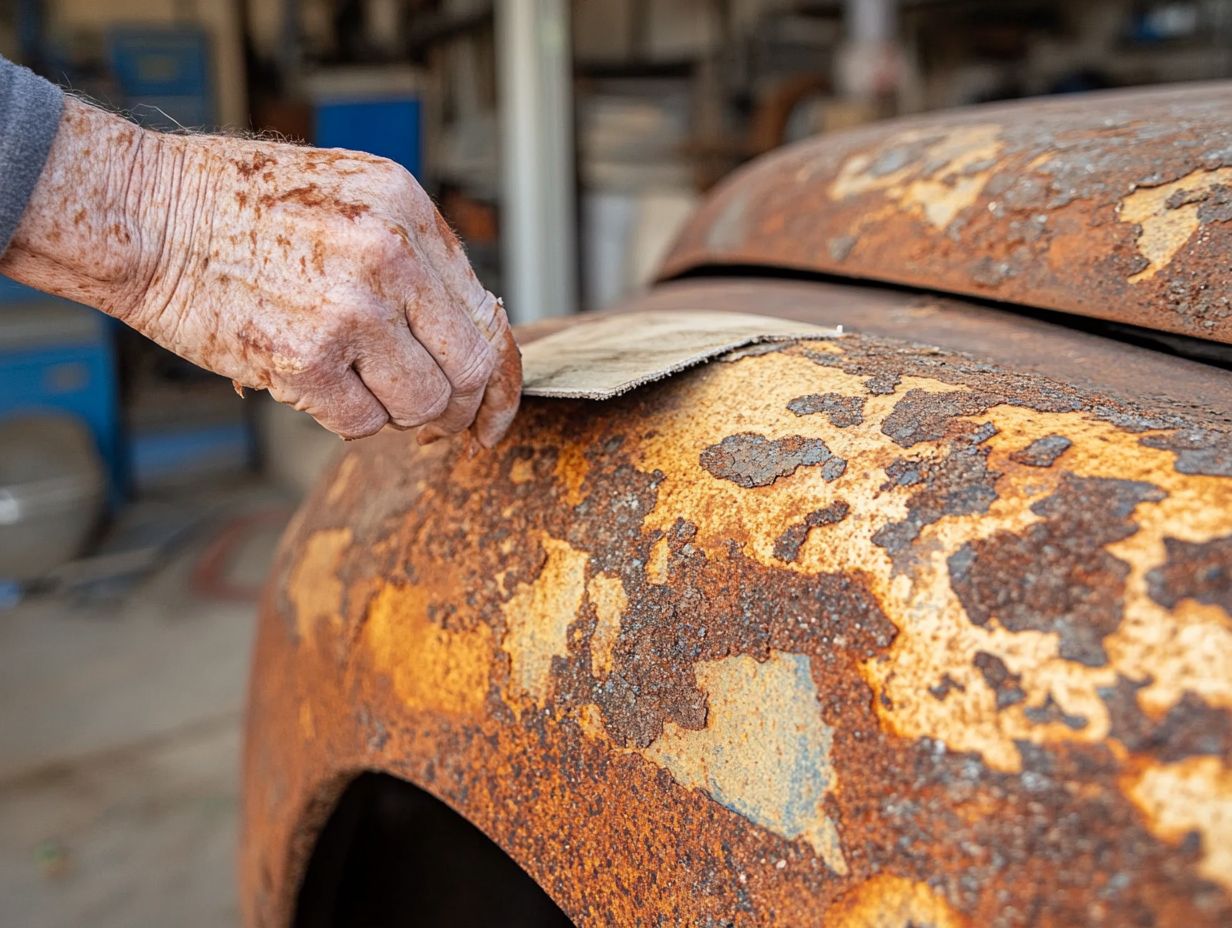
1. How can I prevent rust from forming on my car?
Regularly washing and waxing your car can help prevent rust by removing dirt and debris that can trap moisture. Additionally, knowing how to spot common rust problems and applying a rust inhibitor or sealant can provide an added layer of protection.
2. What are the signs that my car has rust?
Common signs of rust include visible brown or red spots on the body, flaky or bubbly paint, and a musty smell coming from the air vents.
3. Are certain areas of my car more susceptible to rust?
Yes, areas constantly exposed to moisture or road salt, such as the undercarriage, wheel wells, and lower parts of the doors, are more prone to rust. Regularly inspecting and treating these areas can help prevent rust from spreading.
4. Can rust affect the safety and performance of my car?
Yes, rust can weaken the structural integrity of your car and cause components to break or fail. It can also damage important systems like the brakes and exhaust, leading to potential safety hazards and expensive repairs.
5. What should I do if I notice rust on my car?
If caught early, rust can be sanded down and repainted to prevent further damage. However, if rust has spread and caused structural damage, it may require professional repair or replacement of affected parts.
6. How often should I check for rust on my car?
It is recommended to inspect your car for rust at least once a year, preferably before and after winter. This allows you to catch any rust early and prevent it from spreading and causing further damage.
Keeping your car rust-free isn t just smart; it s essential for your safety and your car s lifespan!


